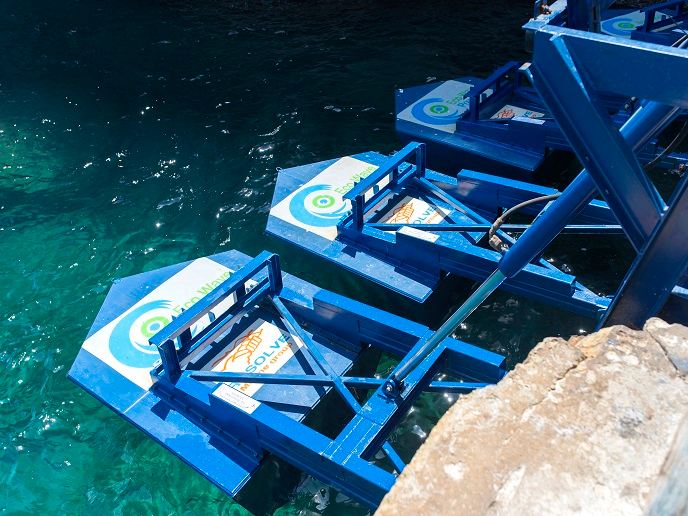Powering cities with waves: A long-awaited vision becomes real
Watching and listening to the constant movement of waves crashing against the shore can be wonderfully soothing. Ironic then that this source of calm can be harnessed for its power and plugged into the electricity grid. EU funding of the Wave Scale project enabled Eco Wave Power(opens in new window) to develop the first operational wave energy plant in Gibraltar. The project is operating through a 25-year power purchase agreement between Eco Wave Power, the Government of Gibraltar and the Gibraltar Electricity Authority. The array currently has an installed capacity of 100 KW, but its expansion to 5 MW is already in planning. Upon its expansion, it is expected to supply up to 15 % of the region’s electricity needs.
A unique wave technology
Eco Wave Power cracked the code with a system of floaters that is 100 % environmentally friendly since it is not attached to the ocean floor but fixed to existing marine structures such as breakwaters, jetties or piers. This design simplifies the installation process, maintenance and accessibility. The boat-shaped floaters take advantage of the up and down movement of the incoming waves to generate clean and affordable electricity. This movement compresses and decompresses hydraulic pistons that transmit biodegradable hydraulic fluid into accumulators located on land. The built-up pressure in the accumulators then rotates a hydraulic motor, which in turn rotates the generator, and the clean electricity is then transferred to the grid via an inverter. After decompression, the fluid flows back into the hydraulic fluid tank, where it is then reused by the pistons, thus creating a closed circular system. The whole operation is controlled and monitored by a smart automation system. If the waves become too high for the system to handle, the floaters automatically rise above the water level and stay in the upward position until the storm passes. Once it passes, the floaters return to operation mode.
The largely untapped potential of waves
Today, the popular clean energy trends are solar and wind power. However, according to the Intergovernmental Panel on Climate Change, energy from ocean waves has so far gone untapped. The ocean waves potentially hold twice the amount of energy the world produces today. The International Renewable Energy Agency estimates that by using solely 2 % of the world’s 800 000 km of coastline water, the global technical potential for wave energy is a whopping 500 GW of electrical energy. “Sea water is 832 times denser than air, and thus holds much more kinetic energy. As a result, it has the potential to produce larger electricity amounts with much smaller devices. This saves both space and costs,” notes Inna Braverman, co-founder of Eco Wave Power. Successful development of wave technology in Europe could generate 188 GW of power, supplying 10 % of Europe’s electricity needs by 2050. “Eco Wave Power’s first-of-a-kind onshore wave power generation technology proves that wave energy can be readily implemented at a commercial scale,” concludes Braverman.







